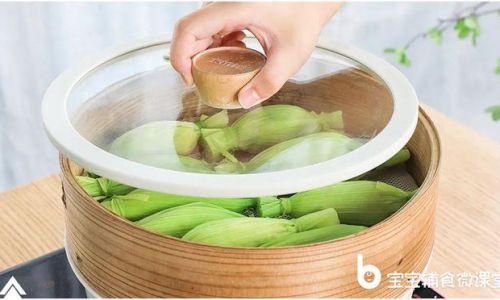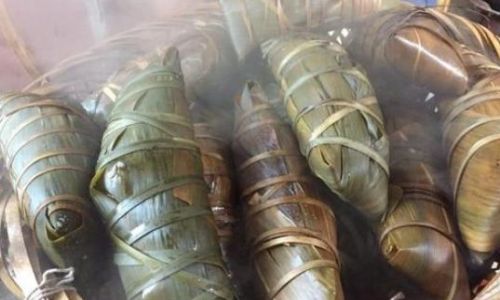Table of content
Zongzi, the iconic pyramid-shaped dumpling wrapped in bamboo or reed leaves, is a culinary symbol of China’s Dragon Boat Festival and a beloved snack year-round. These sticky rice treats, often stuffed with fillings like red bean paste, pork, or salted egg yolk, have transcended cultural borders, captivating palates globally. However, with the rise of convenience, frozen zongzi has become a staple in many households, prompting a critical question: Should frozen zongzi be cooked using low heat? This article delves into the science, techniques, and cultural practices surrounding the preparation of frozen zongzi, unraveling the nuances of heat control to achieve perfect texture, flavor, and safety.
The Anatomy of Zongzi: Why Heat Matters
Before addressing the low-heat debate, it’s essential to understand the structure of zongzi. At its core, zongzi comprises glutinous rice, which has a high starch content that gelatinizes when heated. The rice is tightly packed with fillings, then wrapped in leaves that impart a subtle aroma. Freezing zongzi solidifies the water within the rice and fillings, creating ice crystals that disrupt the starch molecules. When cooked, the goal is to rehydrate the rice, melt the ice crystals, and recombine the starch chains without overcooking or undercooking the ingredients.
The Challenge of Frozen Zongzi
Freezing alters the texture of glutinous rice. The ice crystals can puncture cell walls, leading to a drier or mushier texture if not reheated properly. Moreover, the dense packing of ingredients in zongzi creates thermal barriers, making even heating critical. High heat might rapidly cook the exterior while leaving the center cold, while low heat ensures gradual, uniform warming.
Cooking Methods for Frozen Zongzi: A Comparative Analysis
Boiling: The Traditional Approach
Boiling is the most common method for cooking zongzi, frozen or fresh. The process involves submerging the dumplings in boiling water. However, when dealing with frozen zongzi, adjusting the heat becomes pivotal.
Low Heat vs. High Heat: The Boiling Debate

- High Heat: Boiling frozen zongzi on a rolling boil might seem efficient, but it risks bursting the leaves or overcooking the exterior. The rapid temperature change can cause the leaves to split, releasing fillings into the water.
- Low Heat: Simmering frozen zongzi at a gentle boil (around 90–95°C/194–203°F) allows the ice crystals to melt slowly, ensuring even heat penetration. This method preserves the leaf’s integrity and prevents the rice from becoming waterlogged.
Step-by-Step Boiling Guide
- Fill a large pot with water, ensuring enough to cover the zongzi completely.
- Bring the water to a rolling boil, then reduce to a simmer.
- Add the frozen zongzi and maintain the low boil for 25–35 minutes, depending on size.
- Test for doneness by piercing the center with a chopstick; the rice should yield without resistance.
Steaming: Preserving Moisture and Flavor
Steaming offers an alternative to boiling, particularly for frozen zongzi. This method uses indirect heat, circulating steam to cook the dumplings.
Advantages of Steaming
- Moisture Retention: Steaming prevents the zongzi from becoming waterlogged, as they aren’t submerged.
- Gentle Cooking: The lower heat of steaming (around 100°C/212°F) allows for gradual thawing and cooking, ideal for frozen zongzi.
Steaming Technique
- Place a steamer basket in a pot with 2–3 inches of water.
- Arrange frozen zongzi in the basket, leaving space between each.
- Cover and steam over medium-low heat for 30–45 minutes.
- Ensure the water doesn’t boil dry; refill if necessary.
Pressure Cooking: Speed vs. Texture
Pressure cookers have gained popularity for their efficiency, but they require careful adjustment for frozen zongzi.
Low Heat in Pressure Cooking
While pressure cookers operate at high temperatures (120–125°C/248–257°F), the sealed environment accelerates cooking. For frozen zongzi, a low-pressure setting (around 5–7 PSI) mimics gentle simmering, reducing the risk of overcooking.
Pressure Cooking Steps
- Add 1.5 cups of water to the pressure cooker.
- Place frozen zongzi on a trivet to prevent direct contact with water.
- Cook at low pressure for 15–20 minutes, then allow natural release.
Microwaving: A Quick Fix with Caveats
Microwaving frozen zongzi is the fastest method but poses the highest risk of uneven cooking.
Mitigating Risks with Low Power
- Use the defrost setting or 30% power to thaw gradually.
- Microwave in 2-minute intervals, flipping the zongzi each time.
- Finish by steaming or boiling to ensure even heating.
The Science Behind Low Heat: Why It Works
Starch Retrogradation and Gelatinization
Glutinous rice contains amylopectin, a starch that retrogrades (recrystallizes) when cooled. Freezing exacerbates this process. Low heat allows the starch to re-gelatinize slowly, restoring the sticky, cohesive texture characteristic of zongzi.

Ice Crystal Melting
Rapid heating causes ice crystals to melt abruptly, creating large pockets of water that make the rice soggy. Low heat melts ice crystals gradually, minimizing moisture loss and preserving texture.
Leaf Integrity
Bamboo or reed leaves are delicate. High heat can cause them to split, while low heat maintains their flexibility, ensuring the zongzi holds its shape.
Cultural Perspectives: Tradition Meets Modernity
In China, zongzi preparation is deeply rooted in tradition. Households often boil zongzi over wood fires, a method that inherently uses low, steady heat. However, urbanization and time constraints have shifted practices toward electric cookers and pressure cookers.
Regional Variations
- Southern China: Steaming is preferred for its ability to preserve the delicate flavors of fillings like lotus seed paste.
- Northern China: Boiling is standard, with families often simmering zongzi for hours to achieve a soft, melt-in-the-mouth texture.
Modern Adaptations
Some manufacturers recommend high-heat boiling for frozen zongzi to meet time-sensitive demands. However, culinary experts argue that this compromises texture, advocating instead for low-heat methods that honor the dish’s heritage.
Troubleshooting Common Issues
Undercooked Centers
- Cause: Insufficient cooking time or uneven heat distribution.
- Solution: Extend cooking time by 5–10 minutes, ensuring consistent low heat.
Mushy Rice
- Cause: Overcooking or high heat causing starch breakdown.
- Solution: Reduce heat and monitor closely, removing zongzi as soon as the center is cooked.
Burst Leaves
- Cause: Rapid temperature changes or overcrowding in the pot.
- Solution: Cook at a gentle simmer and avoid overfilling the pot.
Enhancing Flavor and Texture: Pro Tips
- Soak Before Cooking: Thaw frozen zongzi in the refrigerator overnight to reduce cooking time.
- Add Aromatics: Boil zongzi with pandan leaves or star anise for enhanced fragrance.
- Serve with Sauces: Pair with soy sauce, sesame oil, or chili paste to elevate flavor.
The Environmental Angle: Sustainability in Cooking
Low-heat cooking methods consume less energy than high-heat alternatives. For eco-conscious cooks, steaming or simmering frozen zongzi reduces carbon footprints while preserving quality.
Conclusion: Balancing Tradition and Practicality
The debate over using low heat for frozen zongzi hinges on respecting tradition while adapting to modern lifestyles. While high-heat methods offer convenience, low-heat cooking ensures superior texture, flavor, and cultural authenticity. Whether boiling, steaming, or pressure cooking, the key lies in patience—allowing the dumplings to thaw and cook gradually, much like the meticulous craftsmanship that defines zongzi-making itself.
As global appetites for zongzi grow, mastering the nuances of heat control becomes a testament to culinary artistry. So, the next time you unwrap a frozen zongzi, remember: slow and steady not only wins the race but also preserves the soul of this ancient delicacy.





0 comments